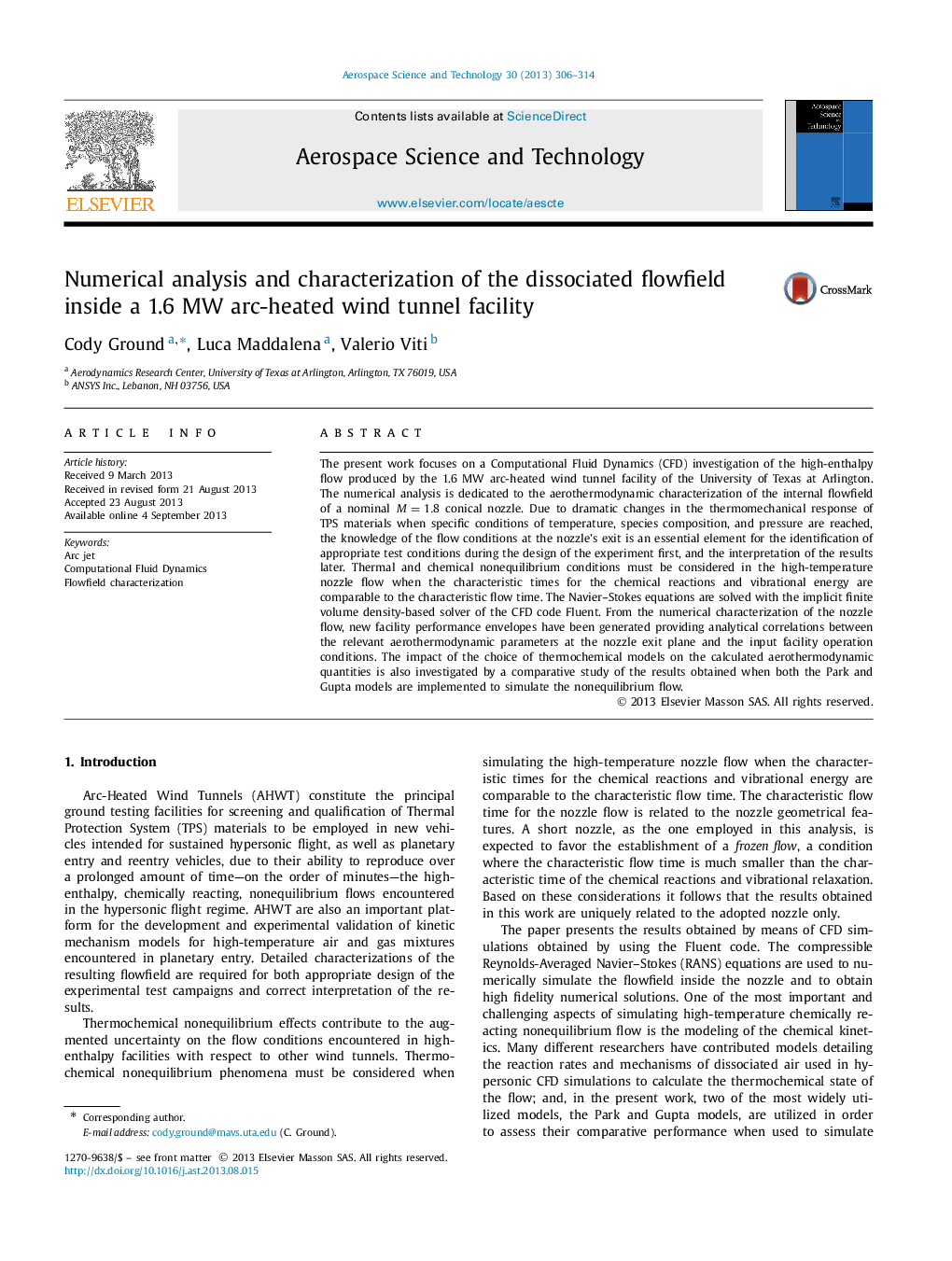| Article ID | Journal | Published Year | Pages | File Type |
|---|---|---|---|---|
| 1718172 | Aerospace Science and Technology | 2013 | 9 Pages |
The present work focuses on a Computational Fluid Dynamics (CFD) investigation of the high-enthalpy flow produced by the 1.6 MW arc-heated wind tunnel facility of the University of Texas at Arlington. The numerical analysis is dedicated to the aerothermodynamic characterization of the internal flowfield of a nominal M=1.8M=1.8 conical nozzle. Due to dramatic changes in the thermomechanical response of TPS materials when specific conditions of temperature, species composition, and pressure are reached, the knowledge of the flow conditions at the nozzleʼs exit is an essential element for the identification of appropriate test conditions during the design of the experiment first, and the interpretation of the results later. Thermal and chemical nonequilibrium conditions must be considered in the high-temperature nozzle flow when the characteristic times for the chemical reactions and vibrational energy are comparable to the characteristic flow time. The Navier–Stokes equations are solved with the implicit finite volume density-based solver of the CFD code Fluent. From the numerical characterization of the nozzle flow, new facility performance envelopes have been generated providing analytical correlations between the relevant aerothermodynamic parameters at the nozzle exit plane and the input facility operation conditions. The impact of the choice of thermochemical models on the calculated aerothermodynamic quantities is also investigated by a comparative study of the results obtained when both the Park and Gupta models are implemented to simulate the nonequilibrium flow.
